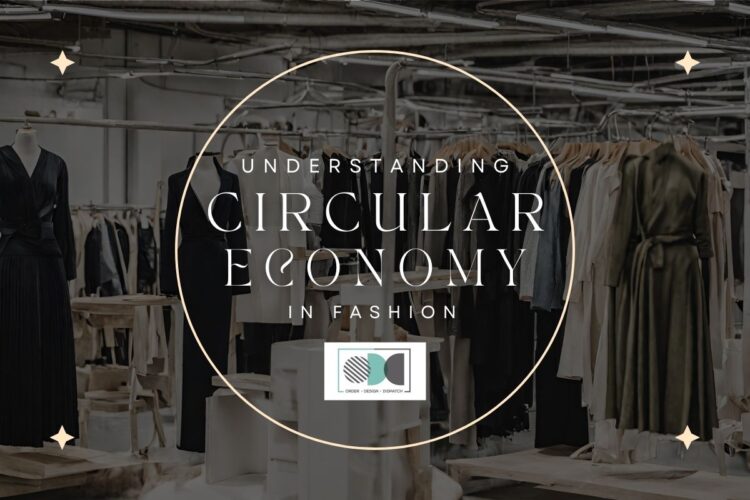The Importance of Circular Fashion
The fashion industry stands at the crossroads of innovation and tradition, where the pressing need for sustainability calls for a transformation towards a circular economy. Circular fashion embodies the principles of this economy, promoting a system of reuse, recycle, and regeneration. In this article, we\’ll delve into the concept of circular economy in fashion and its pivotal role in driving the industry towards a more sustainable future.
The Circular Fashion Imperative
Circular fashion isn\’t just a trend; it\’s an imperative. As consumers become increasingly aware of the environmental impact of their purchases, the demand for sustainable practices in fashion is growing. Circular fashion is the industry\’s response to this demand, championing the philosophy of a closed-loop system where products are designed, sourced, produced, and provided with longevity and recyclability in mind.
Designing with Purpose
The journey of circular fashion begins at the drawing board. Designing for longevity means creating timeless pieces that transcend seasonal trends. It also involves selecting materials that are durable, repairable, and ultimately recyclable or biodegradable. This design philosophy challenges the \”buy-and-dispose\” mindset, advocating for a more thoughtful approach to consumption.
Ethical Sourcing: The Start of the Loop
Circular economy in fashion places a significant emphasis on sourcing. It\’s about knowing where materials come from, how they are produced, and ensuring that they are obtained in a way that\’s responsible both socially and environmentally. Ethical sourcing not only supports fair labor practices but also secures a supply of materials that are produced with minimal ecological footprint.
Production: Redefining Efficiency
In a circular fashion system, production processes are redesigned to minimize waste and reduce the environmental impact. This can involve using renewable energy, recycling water, or implementing zero-waste cutting techniques. The key is to create more with less, ensuring that every resource is utilized to its fullest potential.
Circularity Beyond the First Life: Reuse and Recycle
Circular fashion doesn\’t end with the sale of a garment. It extends to the post-consumer life, where the focus is on the potential for reuse, repair, and recycling. Brands are encouraged to take responsibility for their products throughout their life cycle, offering services like take-back schemes, repair workshops, and recycling programs to keep garments in use for as long as possible.
Regeneration: Closing the Loop
Ultimately, circular fashion is about regeneration — returning materials back into the production cycle once their current use comes to an end. This could involve mechanical or chemical recycling processes that transform old garments into new textiles. By investing in research and innovation, the fashion industry can find new ways to break down and rebuild fibers and fabrics, keeping resources in circulation.
Circular Economy in Fashion: A Collaborative Effort
Achieving a circular economy in fashion requires the collective effort of designers, manufacturers, retailers, and consumers. It\’s about creating a network that supports the circulation of products and materials in a way that adds value at every stage. This collaborative effort can lead to the development of new business models, such as fashion rental services, subscription boxes, and second-hand markets, all of which prioritize the principles of circularity.
The Role of Technology and Innovation
Technology and innovation play a crucial role in transitioning to circular fashion. From blockchain for supply chain transparency to the development of new materials that are easier to recycle, technological advancements are enabling the fashion industry to take giant leaps towards circularity. By investing in these technologies, brands can trace the origin of their materials, ensure ethical practices, and provide transparency to consumers.
Consumer Engagement: The Power of Choice
The success of circular economy in fashion also hinges on consumer engagement. By educating consumers on the importance of sustainability and the impact of their choices, brands can encourage more responsible consumption patterns. Whether it\’s choosing to buy less but better, opting for repair services, or recycling old clothes, consumers have the power to drive the industry towards a more sustainable future.
The Odd Factory: Pioneering Circular Fashion
At The Odd Factory, we are committed to pioneering circular fashion. We believe in creating products that not only meet the aesthetic and functional needs of our consumers but also uphold the principles of a circular economy in fashion. By integrating these practices into our operations, we strive to lead by example and inspire change within the industry.
Conclusion: Circular Fashion as the Future
In conclusion, understanding the circular economy in fashion is fundamental to the industry\’s sustainability journey. Circular fashion offers a path to reduce the environmental footprint, create economic value, and foster innovation. As we continue to embrace these principles, we can look forward to a fashion industry that not only thrives in commerce but also contributes positively to the ecosystem. The Odd Factory stands at the forefront of this movement, championing circular fashion as the standard for our industry\’s future.
Let us help you establish circular fashion model for your brand , Partner with India’s finest women lead slow slow fashion manufacturing unit
Reach out to us on –
Join our Communities



